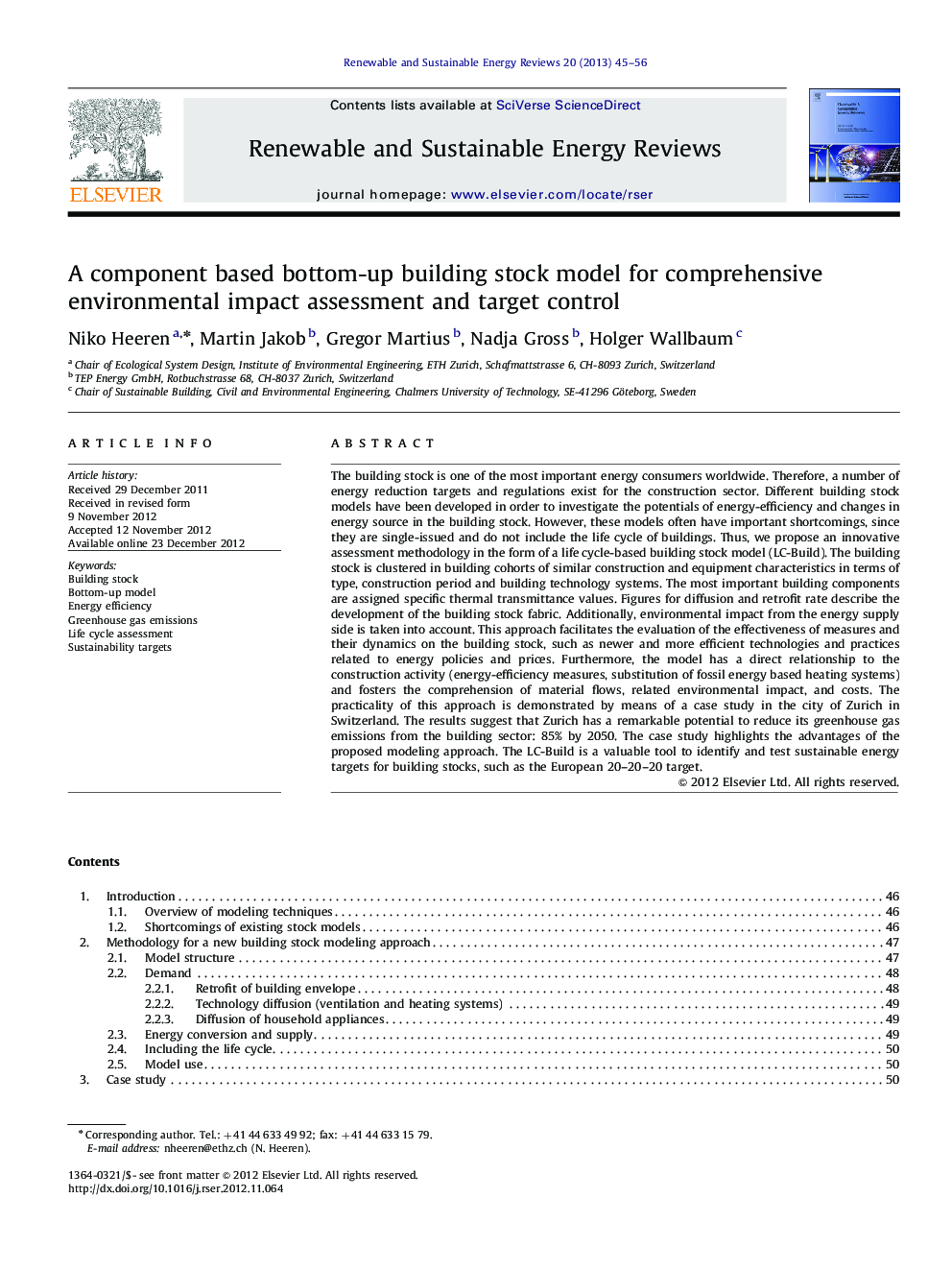| کد مقاله | کد نشریه | سال انتشار | مقاله انگلیسی | نسخه تمام متن |
|---|---|---|---|---|
| 8122155 | 1522365 | 2013 | 12 صفحه PDF | دانلود رایگان |
عنوان انگلیسی مقاله ISI
A component based bottom-up building stock model for comprehensive environmental impact assessment and target control
ترجمه فارسی عنوان
یک مدل پایه ساختمانی پایه جزء برای ارزیابی اثرات جامع زیست محیطی و کنترل هدف
دانلود مقاله + سفارش ترجمه
دانلود مقاله ISI انگلیسی
رایگان برای ایرانیان
کلمات کلیدی
ساختمان انبار، مدل پایین تر، بهره وری انرژی، انتشار گازهای گلخانه ای، ارزیابی چرخه حیات، اهداف پایداری،
موضوعات مرتبط
مهندسی و علوم پایه
مهندسی انرژی
انرژی های تجدید پذیر، توسعه پایدار و محیط زیست
چکیده انگلیسی
The building stock is one of the most important energy consumers worldwide. Therefore, a number of energy reduction targets and regulations exist for the construction sector. Different building stock models have been developed in order to investigate the potentials of energy-efficiency and changes in energy source in the building stock. However, these models often have important shortcomings, since they are single-issued and do not include the life cycle of buildings. Thus, we propose an innovative assessment methodology in the form of a life cycle-based building stock model (LC-Build). The building stock is clustered in building cohorts of similar construction and equipment characteristics in terms of type, construction period and building technology systems. The most important building components are assigned specific thermal transmittance values. Figures for diffusion and retrofit rate describe the development of the building stock fabric. Additionally, environmental impact from the energy supply side is taken into account. This approach facilitates the evaluation of the effectiveness of measures and their dynamics on the building stock, such as newer and more efficient technologies and practices related to energy policies and prices. Furthermore, the model has a direct relationship to the construction activity (energy-efficiency measures, substitution of fossil energy based heating systems) and fosters the comprehension of material flows, related environmental impact, and costs. The practicality of this approach is demonstrated by means of a case study in the city of Zurich in Switzerland. The results suggest that Zurich has a remarkable potential to reduce its greenhouse gas emissions from the building sector: 85% by 2050. The case study highlights the advantages of the proposed modeling approach. The LC-Build is a valuable tool to identify and test sustainable energy targets for building stocks, such as the European 20-20-20 target.
ناشر
Database: Elsevier - ScienceDirect (ساینس دایرکت)
Journal: Renewable and Sustainable Energy Reviews - Volume 20, April 2013, Pages 45-56
Journal: Renewable and Sustainable Energy Reviews - Volume 20, April 2013, Pages 45-56
نویسندگان
Niko Heeren, Martin Jakob, Gregor Martius, Nadja Gross, Holger Wallbaum,
